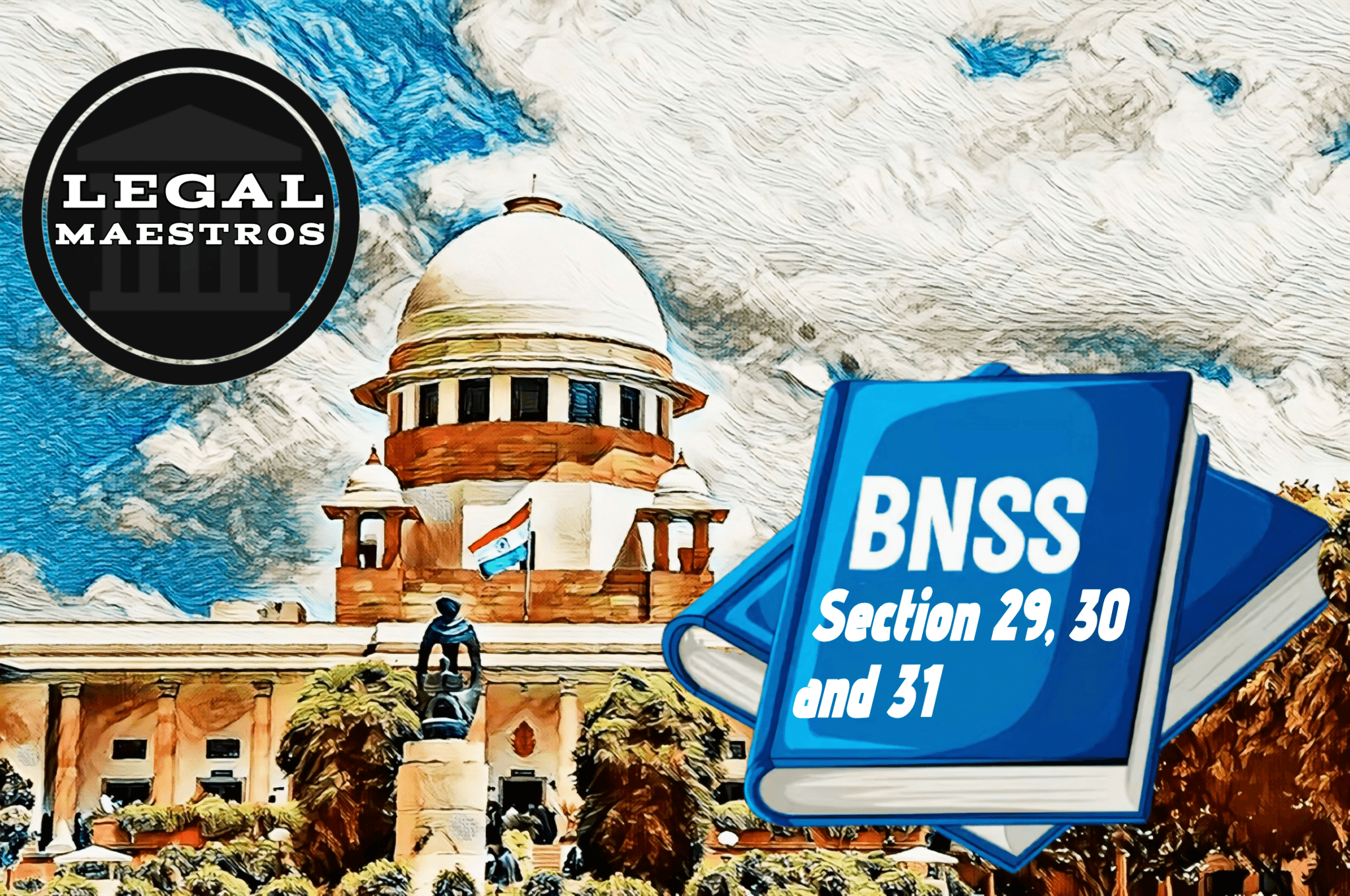
Section 29: Powers of Judges and Magistrates Exercisable by Their Successors-in-Office
In the event that a judge or magistrate is replaced, Section 29 addresses the issue of maintaining the continuity of judicial powers and duties. This guarantees that the administration of justice will not be slowed down or impeded as a result of changes in the officers who are presiding over a case.
The transfer of powers to the successor is discussed in sentence one.
In accordance with the provisions of subsection (1), in the event that a Judge or Magistrate is replaced, the individual who takes over as the new Judge or Magistrate is permitted to continue carrying out the responsibilities and exercising the powers of the official who passed away. With the exception of situations where the Sanhita (the code) contains an explicit restriction, this applies to all processes.
Consider the following scenario: a Magistrate is presiding over a case of theft and has recorded the testimony of two witnesses. The Magistrate is moved to a different location before the case is considered resolved. Should the next Magistrate assume possession of the court, they will have the ability to pick up the case from the point where it was left off. There is no requirement for him to commence the trial from the very beginning unless the law specifically requires him to do so.
For any queries or to publish an article or post or advertisement on our platform, do call at +91 6377460764 or email us at contact@legalmaestros.com.
Subsection 2: The Function of the Sessions Judge in the Event of a Question
There are situations when there may be a lack of clarity regarding the individual who ought to be designated the official successor to a judge. The Sessions Judge is the one who has the authority to clear up any confusion that may arise in such circumstances. In order to determine who will be considered the successor-in-office of that Judge for the purposes of the Sanhita and any other actions that are related to it, he is required to issue a formal order.
Two additional district judges are transferred around the same period, as seen in the attached illustration. Regarding the question of who is intended to carry on the duties of a retiring judge, there is a cloud of doubt. A decision will be made by the Sessions Judge, who will then issue an order to determine who will take over the cases that were left by the retired judge.
A determination made by either the Chief Judicial Magistrate or the District Magistrate is included in subsection (3).
When there is a similar uncertainty regarding who should be the successor-in-office for Magistrates, the Chief Judicial Magistrate or the District Magistrate (depending on the circumstances) has the jurisdiction to make a decision. In addition to this, they are required to give a formal order in order to correctly designate the Magistrate.
For any queries or to publish an article or post or advertisement on our platform, do call at +91 6377460764 or email us at contact@legalmaestros.com.
As an illustration, in the event that two Magistrates are transferred and one of them has pending procedures under a certain jurisdiction, and there is doubt as to who is to take up the matter, the Chief Judicial Magistrate will clarify the situation and designate the successor.
By thoroughly detailing the manner in which the transition of judicial responsibilities ought to take place, this clause contributes to the prevention of legal disputes and delays that are not required. The concept that court procedures should not be halted just because of administrative changes is supported by this piece of legislation.
For More Updates & Regular Notes Join Our Whats App Group (https://chat.whatsapp.com/DkucckgAEJbCtXwXr2yIt0) and Telegram Group ( https://t.me/legalmaestroeducators )
For any queries or to publish an article or post or advertisement on our platform, do call at +91 6377460764 or email us at contact@legalmaestros.com.
Section 30: Powers of Superior Officers of Police
In accordance with the provisions of Section 30, senior police officers are granted the authority to exercise the powers of a police station in-charge within the boundaries of their assigned region.
Aspects of the Powers
At the same level of authority as the station house officer (SHO), a police officer who possesses a higher rank than the officer in charge of a police station is responsible for the same duties. These authorities are not restricted to a single police station but rather are applicable over the entire geographic region that is assigned to the senior officer.
Consider the following scenario: the Deputy Superintendent of Police (DSP) is conducting an investigation into a case that is within the purview of a local police station. Due to the fact that he has power over the entire region, the District Attorney is able to take the required actions, such as arresting, searching, and seizing individuals, even though the SHO is often the one who is responsible for addressing such situations.
For any queries or to publish an article or post or advertisement on our platform, do call at +91 6377460764 or email us at contact@legalmaestros.com.
The inclusion of this provision guarantees that top officials are able to step in when necessary without being constrained by the borders of their respective local stations. It makes law enforcement more efficient and improves coordination during times of crisis or when large investigations are being conducted.
Why It Is Important
This clause improves law enforcement by enabling senior officials to take action without being subject to delays caused by procedural procedures. Additionally, it prevents circumstances in which the investigation of a crime or the response to an emergency is halted because the SHO is not present or because there are issues in the jurisdiction.
Section 31: Public’s Duty to Assist Magistrates and Police
Every individual is required by law to provide aid to a Magistrate or a police officer when they make a reasonable request for assistance, as stipulated by Section 31. Keeping law and order is a collective obligation that all citizens share, and this section emphasizes that role.
For any queries or to publish an article or post or advertisement on our platform, do call at +91 6377460764 or email us at contact@legalmaestros.com.
To assist in the arrest of individuals or to prevent escapes
In the event that assistance is required in the process of detaining a person or preventing someone from fleeing from lawful custody, the general public is obligated to provide assistance to a magistrate or a police officer. Make sure that the request for assistance is reasonable.
As an illustration, a thief is attempting to flee after committing a burglary, and a law enforcement officer is pursuing him but requires assistance in order to apprehend him. Bystanders are legally obligated to aid in the capture of the thief if the officer shouts to them to help stop the thief from further committing the crime.
Providing Assistance in the Prevention or Suppression of Breach of Peace
The police or the Magistrate may request assistance from the general public in order to restore calm in the event that there is a situation such as a street fight, a riot, or any gathering that has the potential to lead to violence. In situations like this, citizens are legally obligated to provide assistance.
For any queries or to publish an article or post or advertisement on our platform, do call at +91 6377460764 or email us at contact@legalmaestros.com.
As an illustration, a dispute arises between two groups while they are participating in a religious procession. A police officer in the area asks the general public for assistance in separating the groups and bringing the situation under control. Public cooperation is required in order to prevent an escalation.
Helping to Ensure the Safety of Public Infrastructure
Someone who is attempting to cause damage or destruction to public property, such as buses, streetlights, or government buildings, and the police or a Magistrate is attempting to stop them, any anyone who is close is required to assist in the event that they are asked to do so.
As an illustration, some individuals start destroying public benches and lighting while they are participating in a demonstration. Among the crowd, a Magistrate requests a select individuals to assist in putting an end to the destruction. In accordance with Section 31, these individuals are required to provide assistance.
For any queries or to publish an article or post or advertisement on our platform, do call at +91 6377460764 or email us at contact@legalmaestros.com.
Meaning and Importance of This Provision
This part serves as a reminder that the burden of ensuring the safety of the general people does not solely fall on the shoulders of the police and the Magistrates. Because every citizen is a stakeholder in law enforcement, they are obligated to provide help to the authorities whenever they are asked to do so. It contributes to the development of confidence and collaboration between the general public and the agencies that do law enforcement.
Due to the fact that the Sanhita takes such non-cooperation seriously in the sake of maintaining public order and safety, failure to comply with such requests may result in legal penalties having to be experienced.

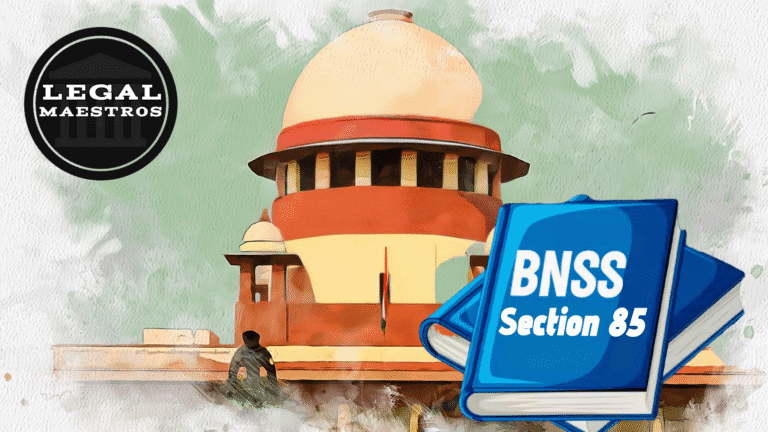
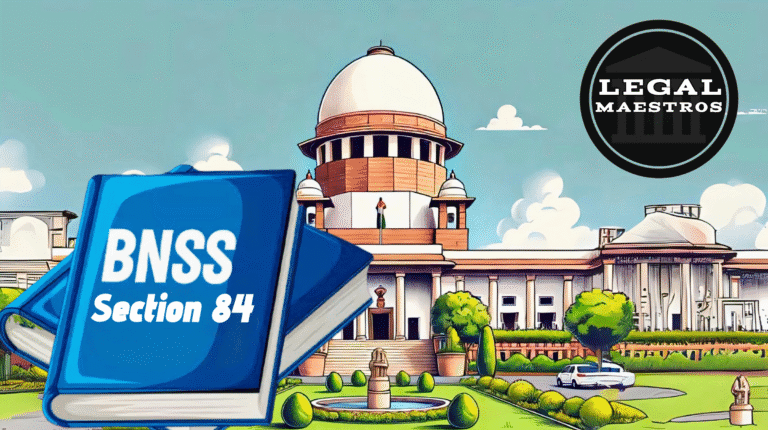
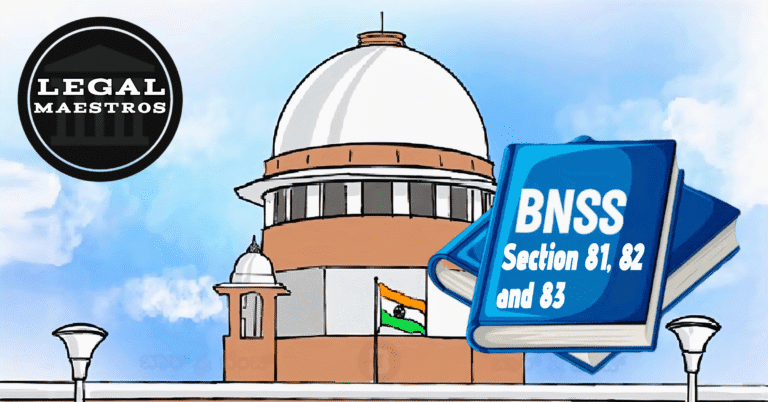
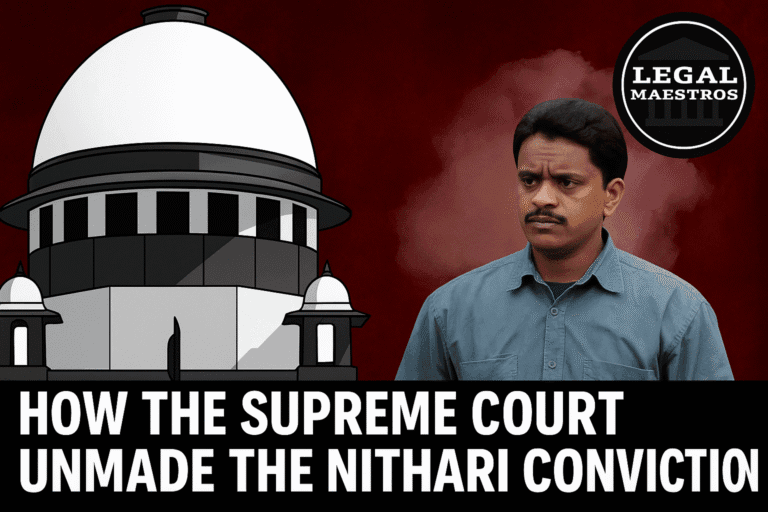
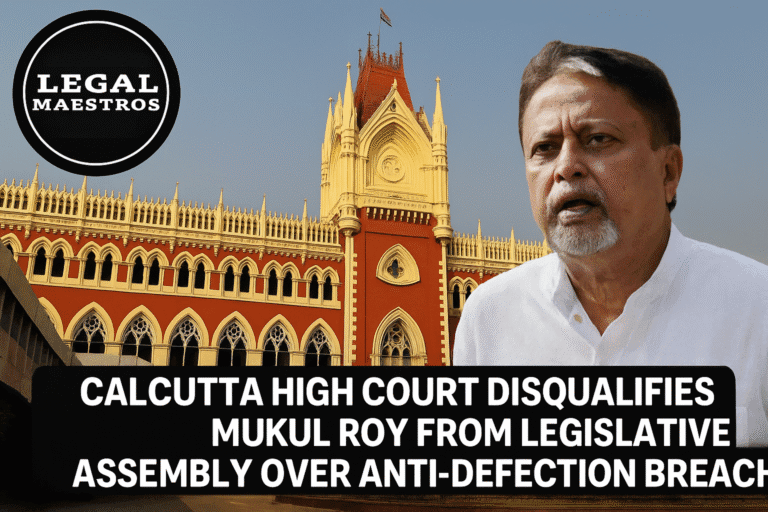
![Research Assistantship @ Sahibnoor Singh Sindhu, [Remote; Stipend of Rs. 7.5k; Dec 2025 & Jan 2026]: Apply by Nov 14, 2025!](https://legalmaestros.com/wp-content/uploads/2025/11/Gemini_Generated_Image_s0k4u6s0k4u6s0k4-768x707.png)
![Karanjawala & Co Hiring Freshers for Legal Counsel [Immediate Joining; Full Time Position in Delhi]: Apply Now!](https://legalmaestros.com/wp-content/uploads/2025/11/Gemini_Generated_Image_52f8mg52f8mg52f8-768x711.png)
2 thoughts on “Bharatiya Nagarik Suraksha Sanhita, 2023 — Sections 29 to 31: Successor Powers, Senior Police Authority, and Citizen Assistance”